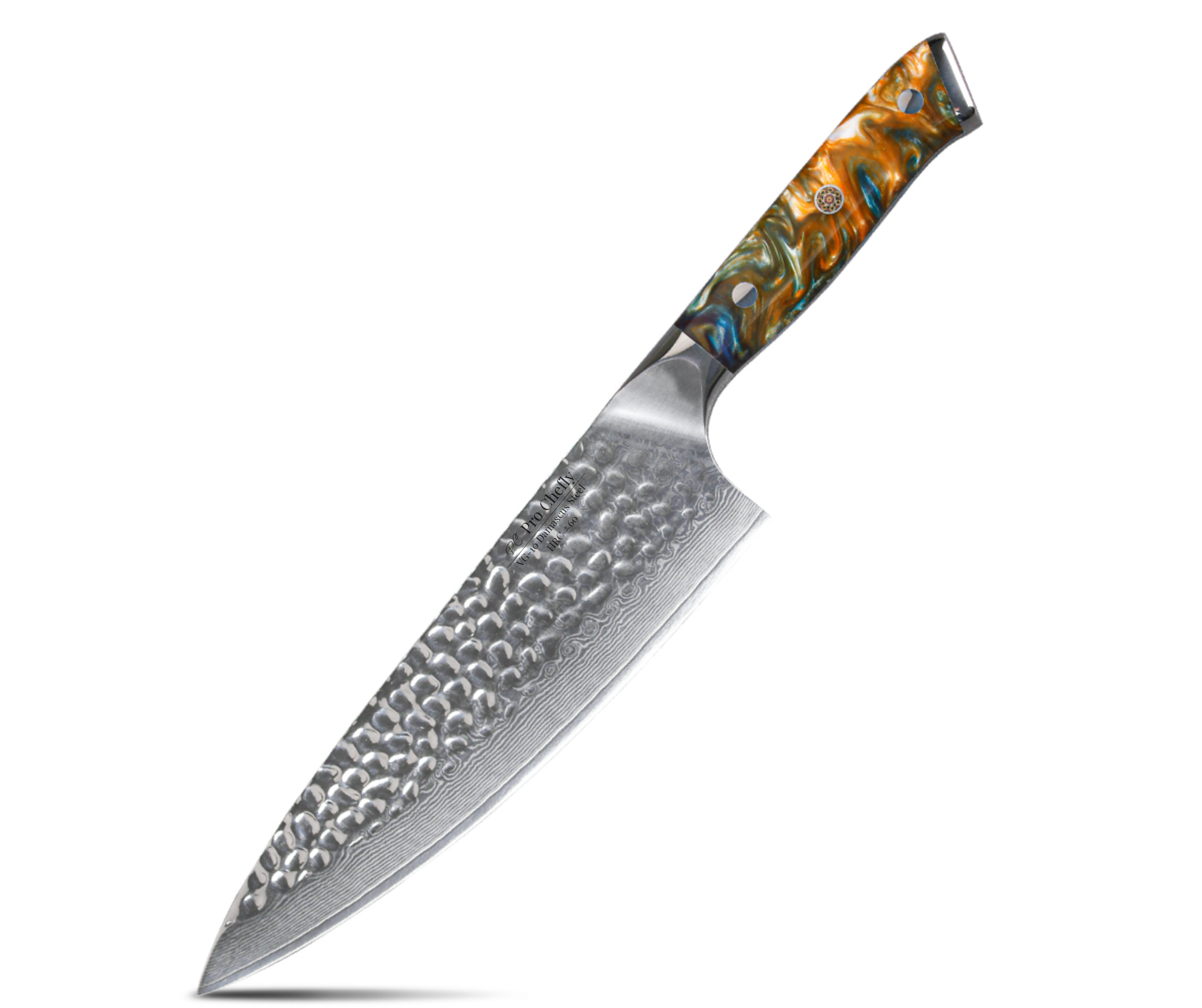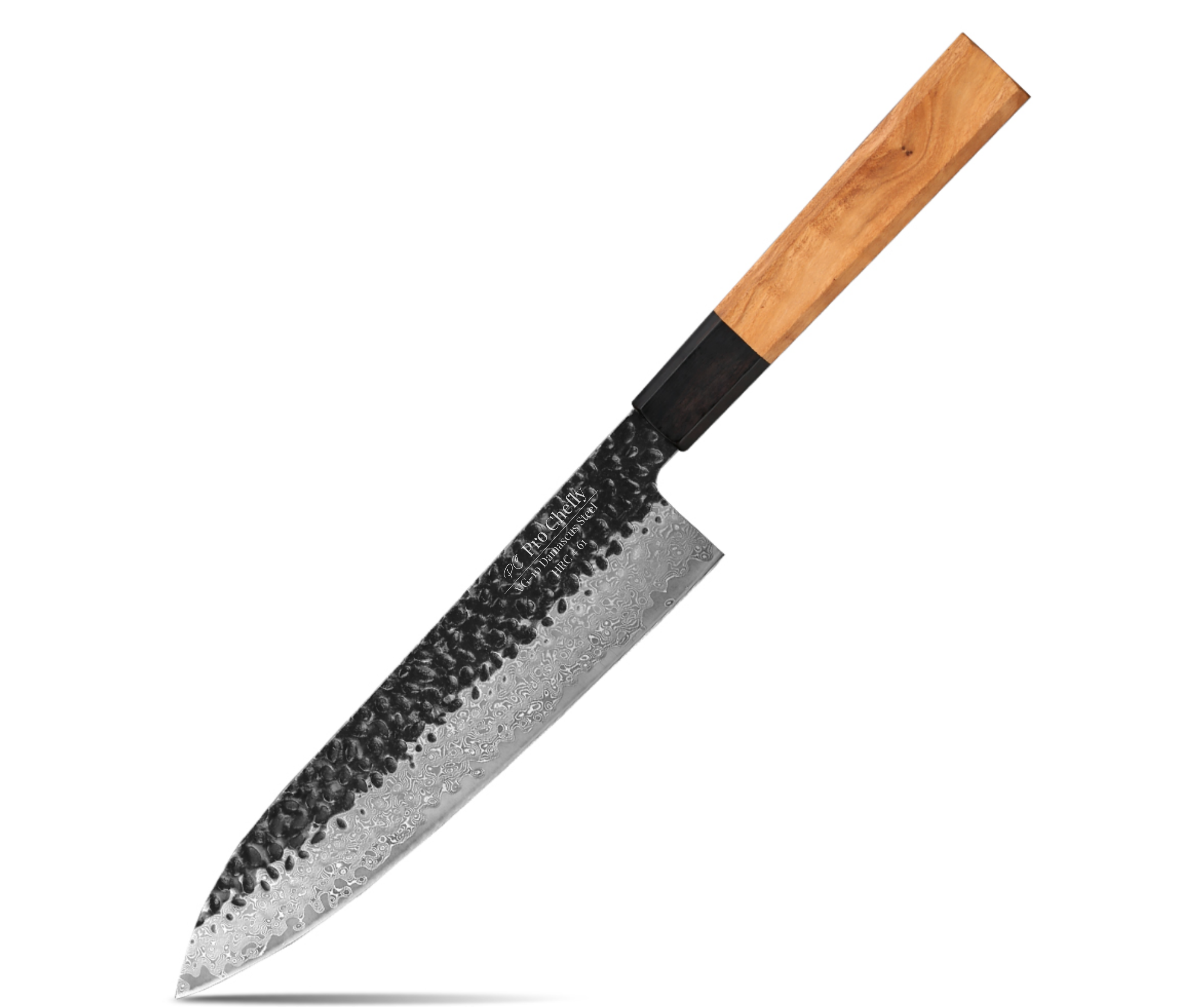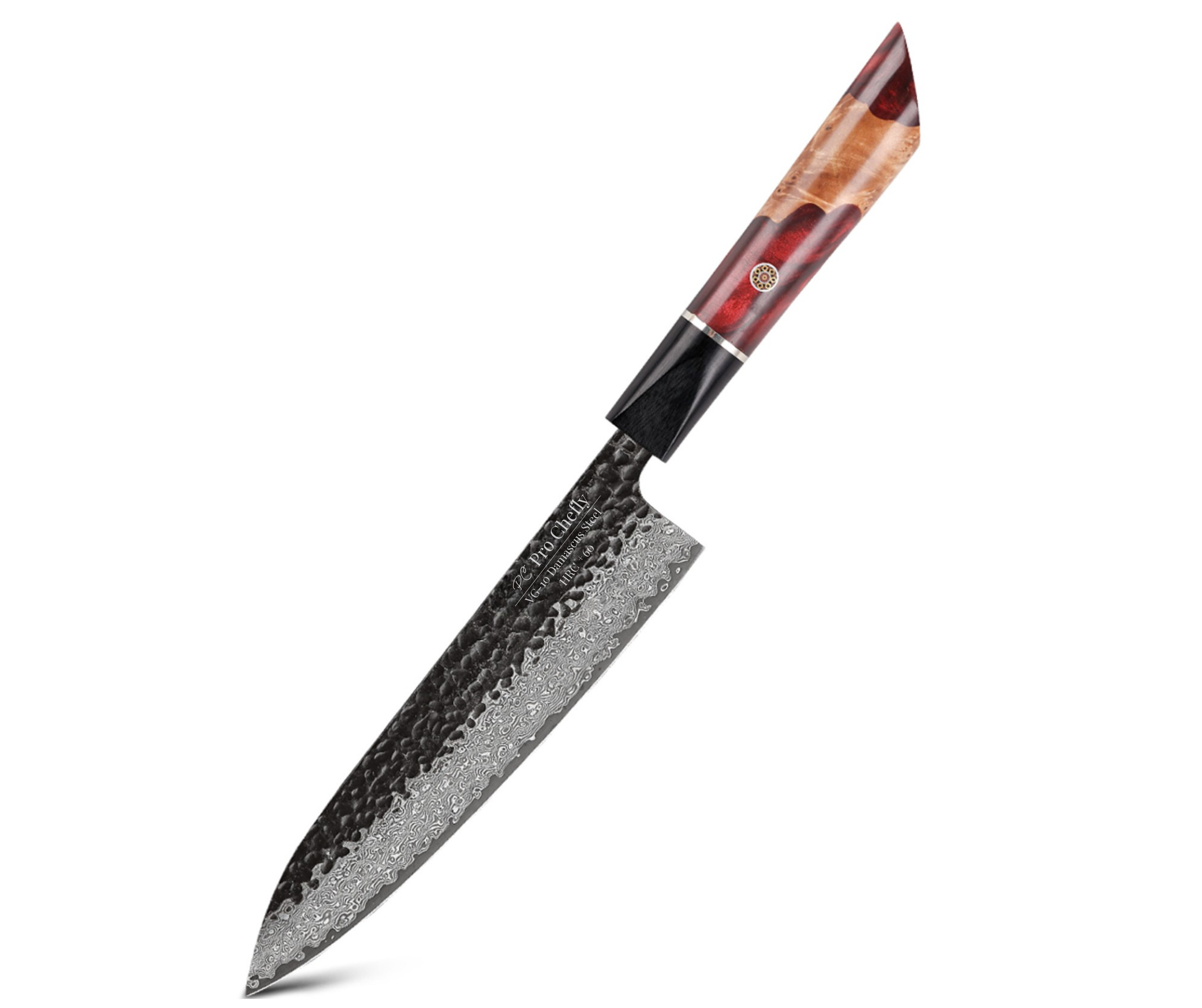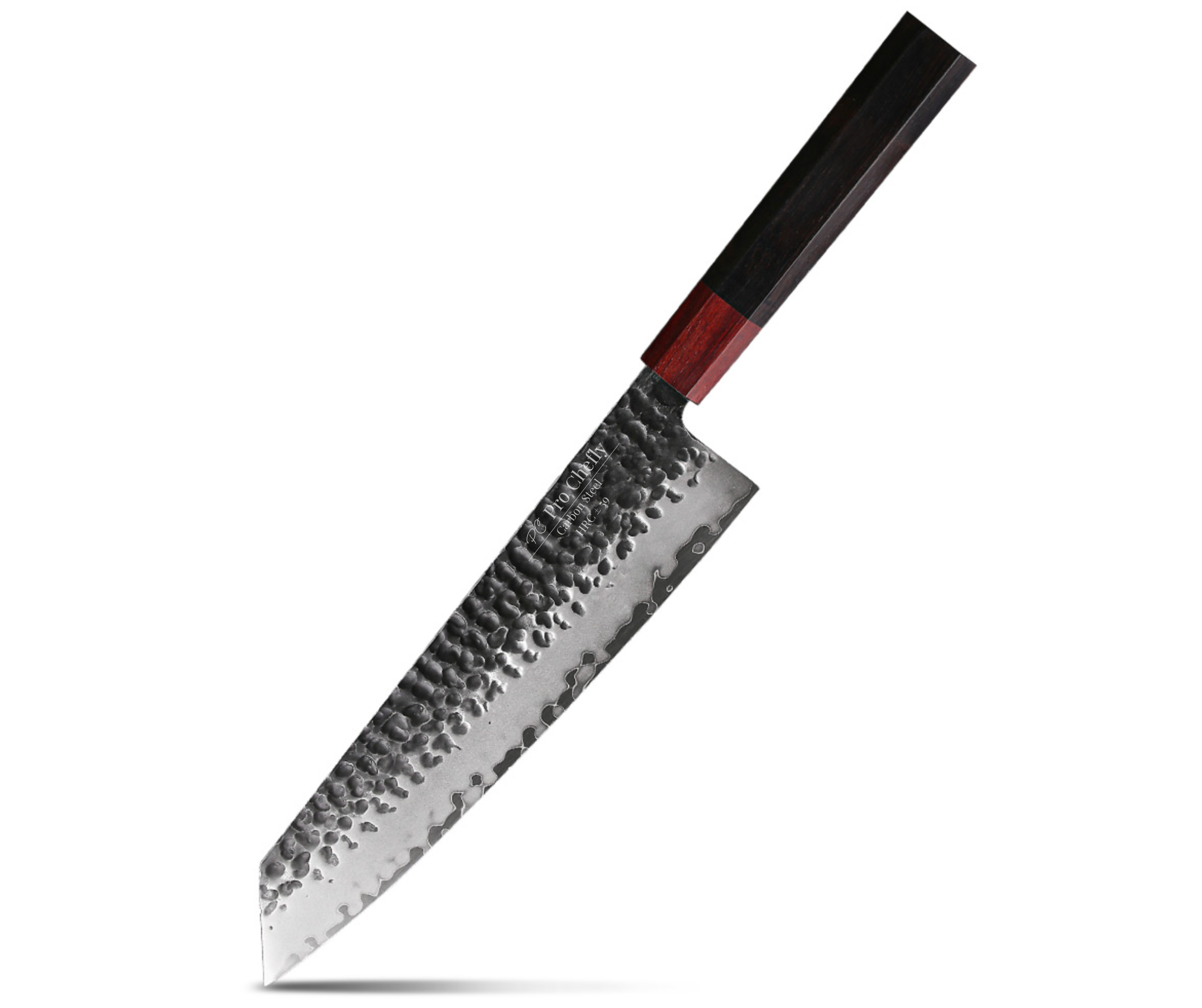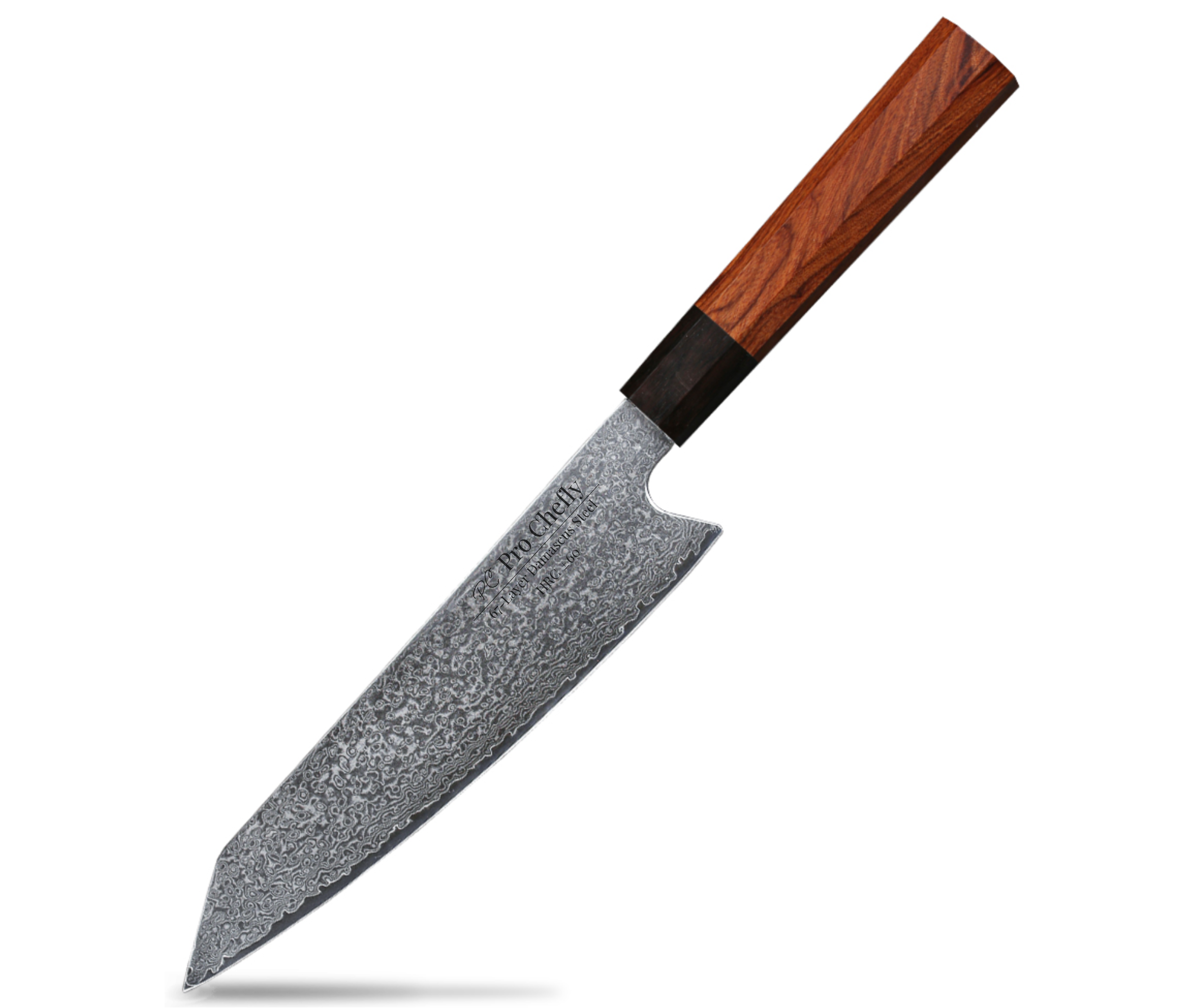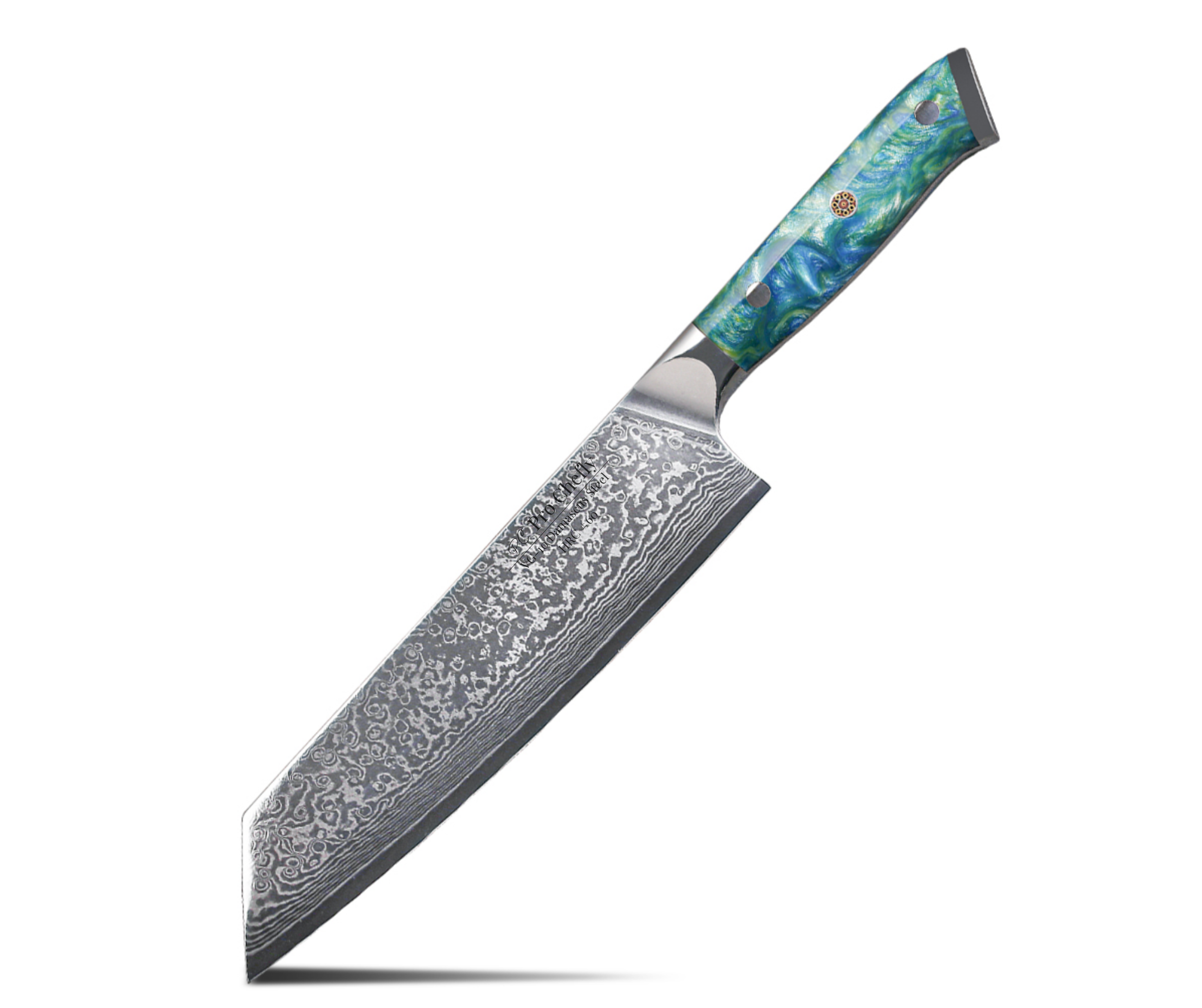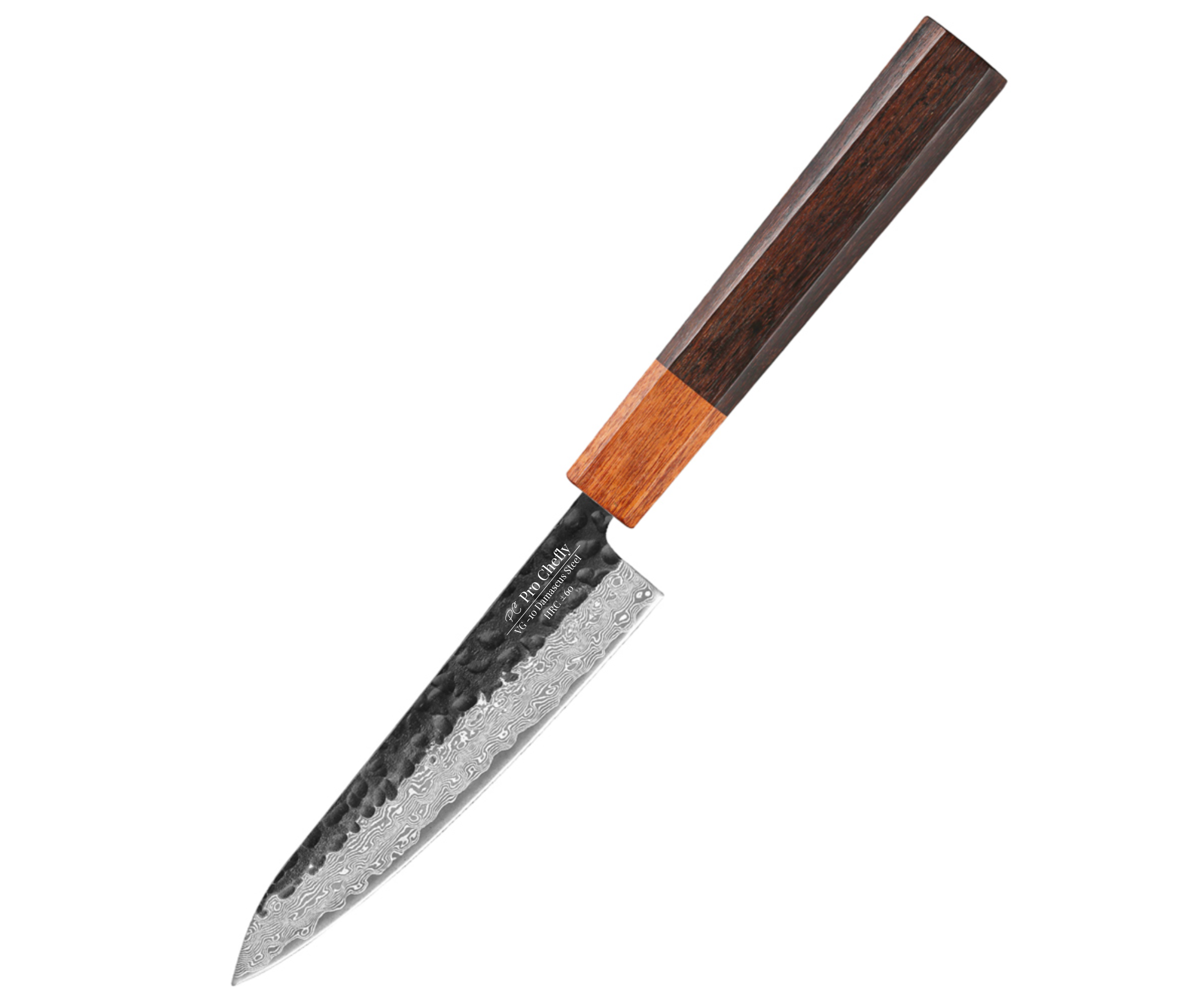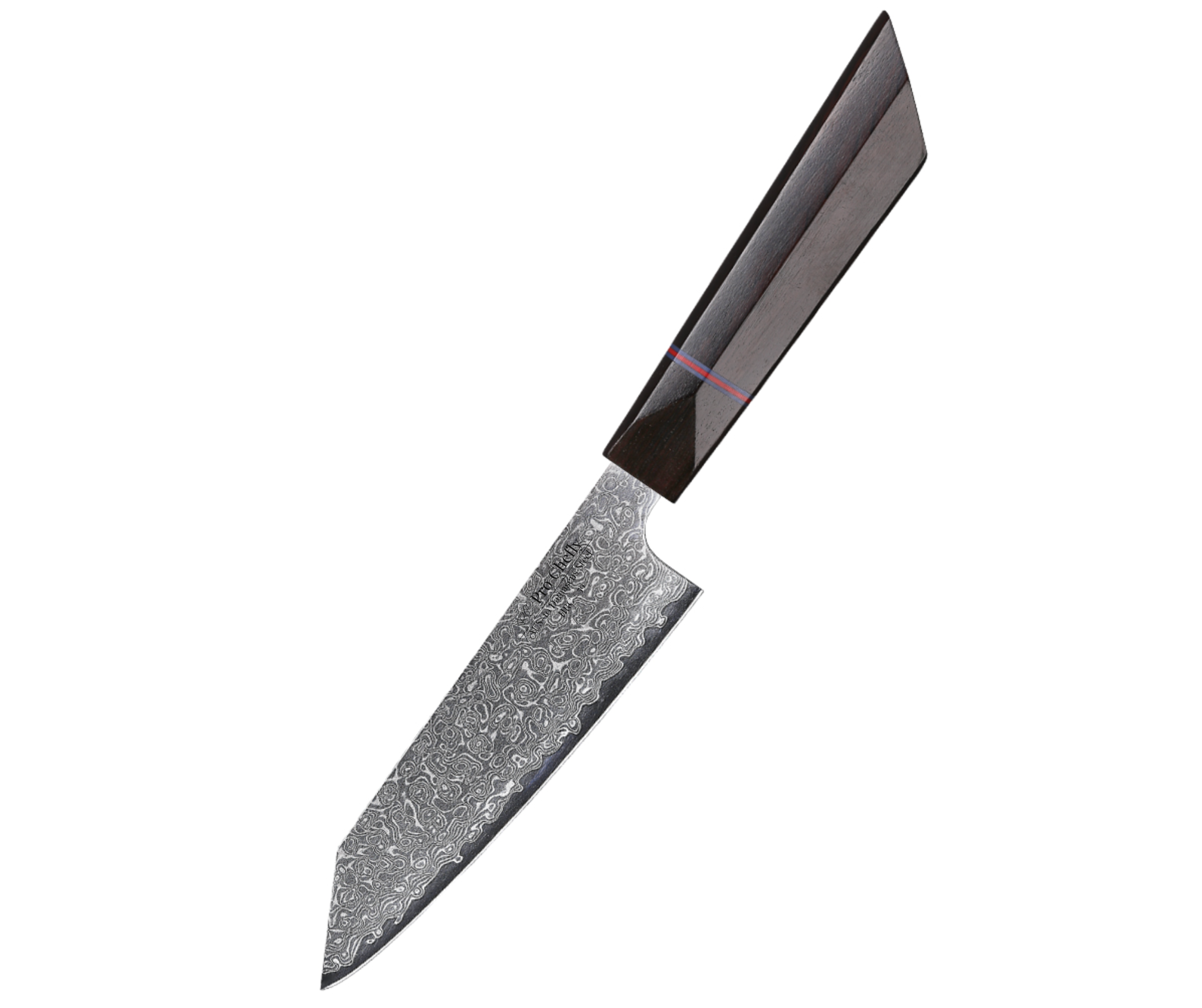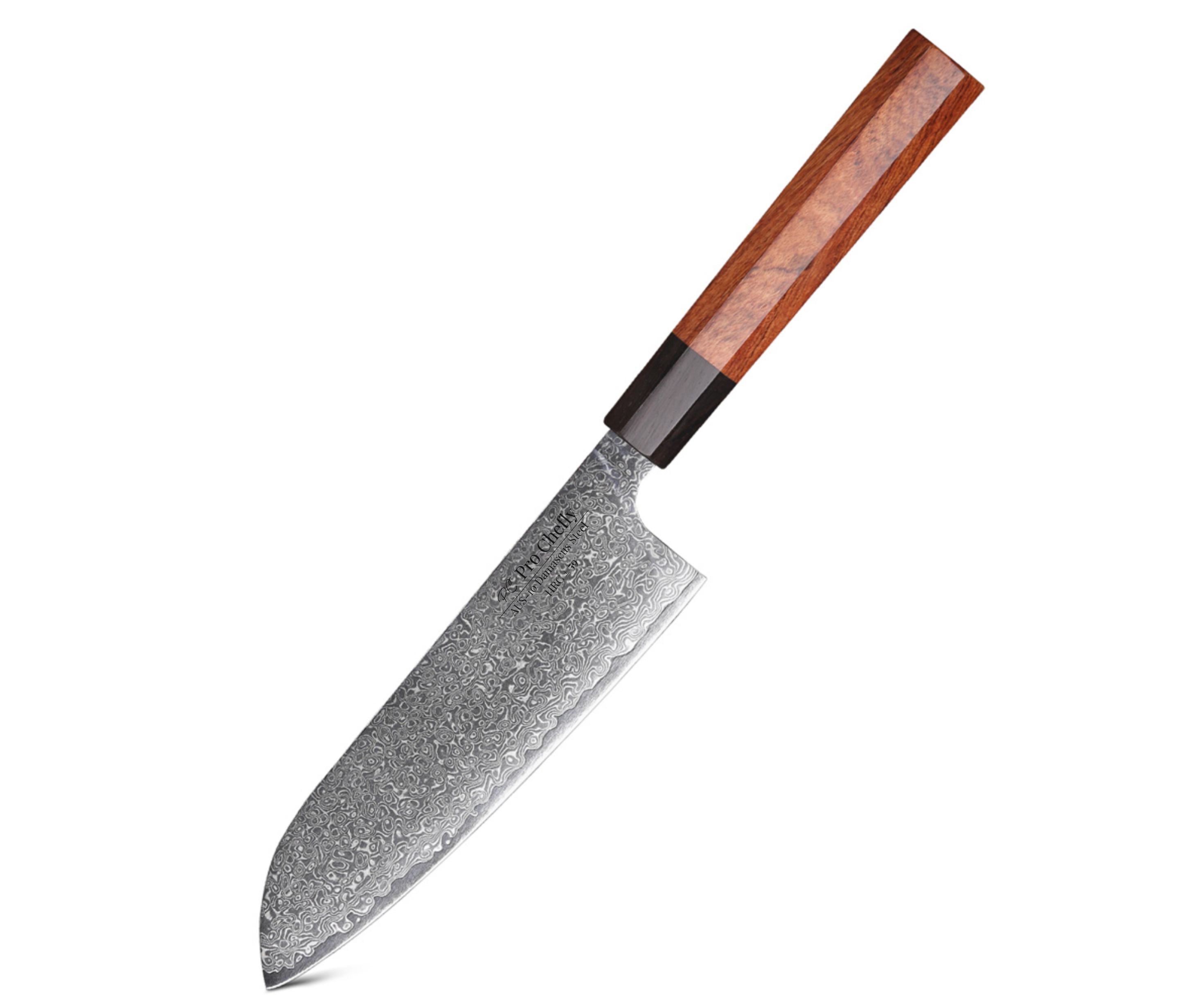Chef’s Overview
Dear Chefs, picture this: you’re standing in a kitchen aisle, staring down a wall of gleaming blades. On one side, the familiar chef knife; on the other, its Japanese cousin, the Santoku. Both promise sharpness, versatility, and culinary glory—but which one do you reach for? Today we’ll cut through the confusion (pun very much intended) and explore the real differences between these two kitchen workhorses. By the end, you’ll know exactly which blade earns its place on your cutting board—and why.

The Classic Western Chef Knife
The chef knife has long been the cornerstone of Western kitchens. Its curved blade allows for a rocking motion that makes mincing herbs or dicing onions feel effortless. The standard 8" VG-10 Damascus Chef Knife embodies this versatility: long enough for roasts, agile enough for prep, and balanced to give you control without strain. If you’ve read What Size Chef Knife is Best for Everyday Cooking, you know why this blade has become the “little black dress” of the kitchen—always the right choice, no matter the meal.
Strengths of the Chef Knife
-
Rocking motion for herbs and vegetables.
-
Larger blade surface, ideal for scooping chopped ingredients.
-
Excellent all-purpose knife for both home cooks and professionals.
Where It Falls Short
Its size can be intimidating for beginners, and in smaller kitchens, a chef knife can feel bulky. That’s where the Santoku comes in.
The Japanese Santoku Knife
Now, let’s cross the Pacific. “Santoku” translates to “three virtues”—slicing, dicing, and mincing. Unlike the curved chef knife, a Santoku has a flatter edge, encouraging a straight up-and-down chop. It’s shorter, lighter, and perfectly suited for precision tasks. The 7" VG-10 Damascus Santoku Knife delivers razor-sharp control while still handling the big jobs, making it a favorite among chefs who prefer finesse over brute force.
Strengths of the Santoku Knife
-
Straight edge for clean, precise cuts.
-
Lighter weight, making it less tiring for long prep sessions.
-
Ideal for vegetables, fish, and thin slicing.
Where It Falls Short
The Santoku doesn’t rock the same way a chef knife does. If you love mincing garlic in a steady rhythm, you might miss the curve.
How to Choose Between Them
Dear Chefs, choosing between these blades isn’t about better or worse—it’s about style. If you’re drawn to Western cooking and hearty prep, the chef knife will never let you down. But if you admire Japanese precision and a lighter touch, the Santoku might just feel like an extension of your hand.
At Pro Chefly, we often recommend starting with a chef knife, then adding a Santoku to expand your toolkit. Together, they cover everything from chopping carrots to slicing sashimi. And if you want to dive deeper into Japanese craftsmanship, revisit From Bunka to Nakiri: Why Every Pro Chefly Knife Has a Place in Your Kitchen, where we explore how blade design shapes cooking traditions. Pair that with insights from What Makes Damascus Steel Knives Different from Stainless Steel and Why Chefs Choose Damascus Steel Knives for Precision, and you’ll understand why steel and shape matter just as much as skill.
Wrap-Up: Two Knives, One Kitchen Philosophy
Think of it like this—your chef knife is the dependable sedan, your Santoku the nimble sports coupe. Both will get you where you need to go; it just depends on how you like to drive. At the end of the day, both blades represent our Pro Chefly philosophy: tools that combine sharpness, honesty, and craftsmanship. Whichever you choose, let it inspire you to cook with confidence, curiosity, and maybe just a little swagger.
Knife Collections
Shop the latest in Pro Chefly Damascus Knives
Chef's Notes
Stay up to date with the latest kitchen stories and recipes

- December 05, 2025
Dear Chefs, the holidays deserve a dish that feels slow, soulful, and unforgettable — and few things capture that spirit...

- November 30, 2025
Dear Chefs, there is something unmistakably comforting about bread pudding in November — the way the custard soaks into the...

- November 25, 2025
Dear Chefs, there is something special about roasted carrots in the fall — the way they caramelize, the way their...

- November 20, 2025
Dear Chefs, there is something magical about fall stuffing, especially when pumpkin and sage join the party. The aroma alone...

- November 15, 2025
Dear Chefs, November has a rhythm of its own — a slower pace, a softer light, and a craving for...

- October 31, 2025
Dear Chefs, fall baking is a ritual — the scent of cinnamon in the air, pecans roasting low and slow,...
- Choosing a selection results in a full page refresh.
- Opens in a new window.
